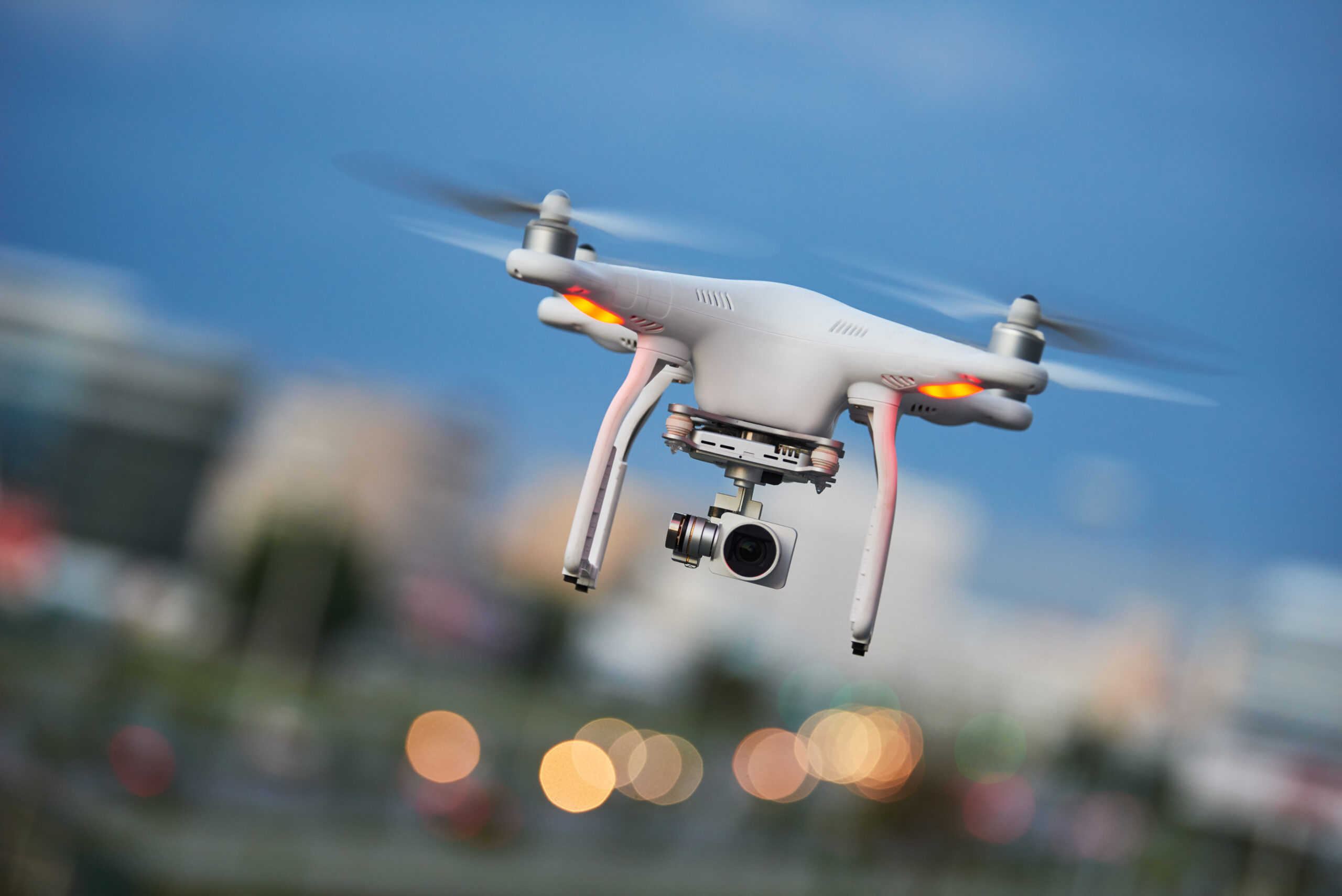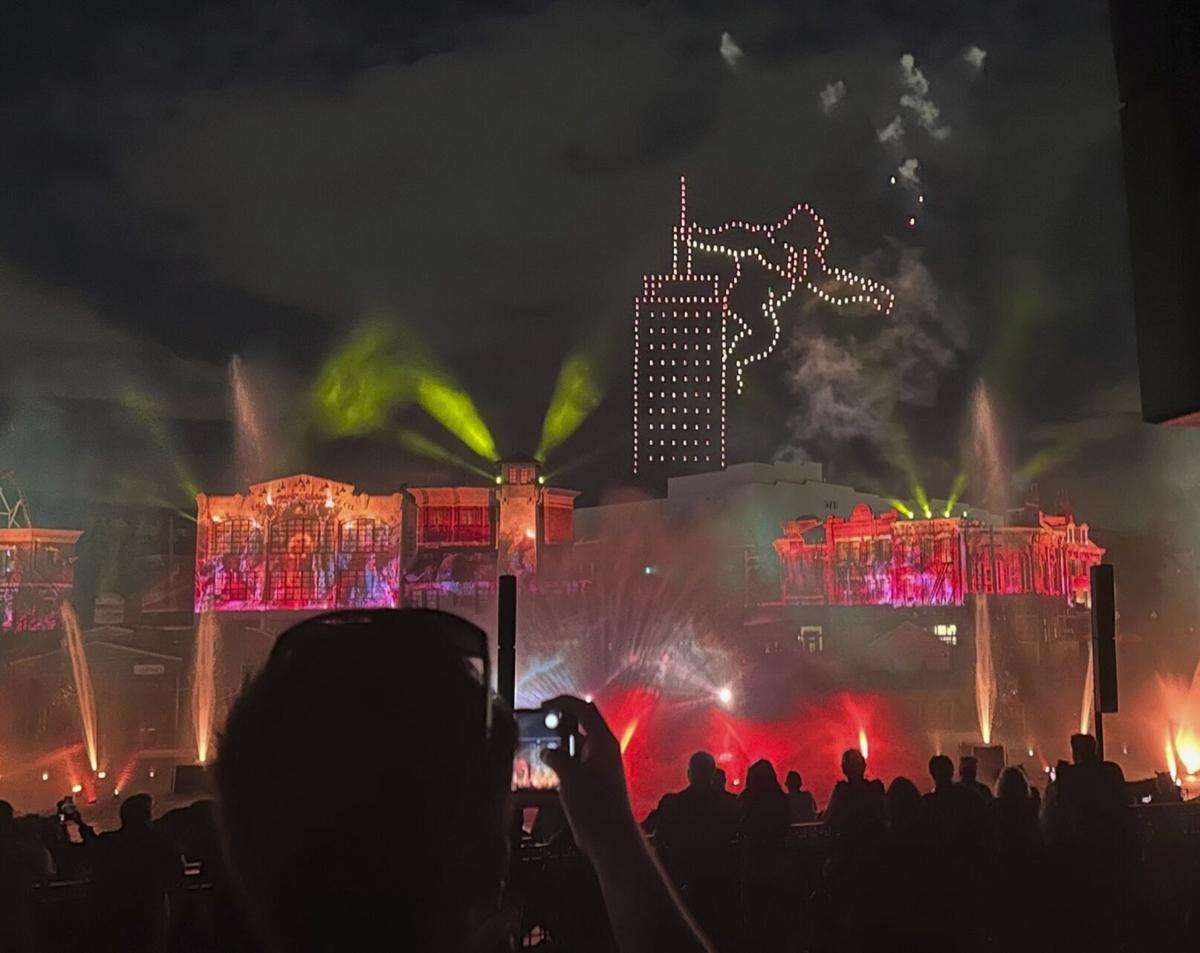Orlando drone show accident: This gripping account delves into the unexpected events surrounding a recent drone show mishap in Orlando, exploring the technical aspects, safety protocols, and regulatory implications. We’ll examine the accident’s timeline, damages, and the subsequent investigation, offering insights into the challenges and future considerations for large-scale drone operations. Prepare to learn about the human and technological factors that played a role in this incident.
This report aims to provide a clear, concise understanding of the incident, offering both factual details and analysis. We’ll cover everything from the specifics of the drones involved to the public’s reaction and the lasting impact on drone safety regulations.
Orlando Drone Show Accident: A Comprehensive Overview

This article provides a detailed account of a drone show accident that occurred in Orlando, focusing on the accident details, injuries and damages, the investigative process, regulatory aspects, safety recommendations, public perception, and a technological analysis of potential causes. We aim to present a factual and informative overview, drawing on hypothetical scenarios where specific details are unavailable to illustrate potential causes and consequences.
Accident Details, Orlando drone show accident
The hypothetical Orlando drone show accident involved a swarm of approximately 50 consumer-grade quadcopter drones programmed to perform a synchronized light show above a large outdoor venue. During the performance, a sudden and unexpected loss of control affected a significant portion of the drones. Several drones deviated from their programmed flight paths, colliding with each other and falling to the ground.
That Orlando drone show accident really got everyone talking about safety protocols, huh? It makes you think about how other large-scale drone displays handle things, like the amazing niagara falls drone show , which I hear has incredibly strict safety measures. Hopefully, investigations into the Orlando incident will lead to better practices across the board for future drone shows.
The incident occurred during a period of slightly gusty winds, although conditions were not considered severe enough to halt the show initially.
The drones involved were commercially available models, with specifications including a weight of approximately 1 kilogram each, a flight time of approximately 20 minutes on a single battery charge, and GPS capabilities for autonomous flight. The drones were equipped with LED lights that contributed to the visual spectacle of the show.
A timeline of events might include: (1) 8:00 PM: Drone show begins; (2) 8:15 PM: First signs of erratic drone behavior; (3) 8:17 PM: Multiple drones lose control and collide; (4) 8:18 PM: Show is halted; (5) 8:20 PM: Emergency services arrive on the scene.
Weather conditions at the time were generally favorable, with clear skies and a light breeze, however, the wind speed was unexpectedly higher than anticipated. This unexpected increase in wind speed is a potential contributing factor to the loss of control.
| Date | Time | Location | Brief Description |
|---|---|---|---|
| October 26, 2024 (Hypothetical) | 8:17 PM | Large Outdoor Venue, Orlando, FL | Multiple drones malfunction and fall from the sky |
Injuries and Damages
The accident resulted in minor injuries to several spectators who were struck by falling drones or debris. No serious injuries were reported. Property damage was primarily limited to the drones themselves and some minor damage to the venue’s landscaping. There was no significant environmental impact as the drones were relatively small and the batteries did not cause any major environmental damage.
The estimated costs associated with the incident include the replacement cost of the damaged drones, medical expenses for those with minor injuries, and repairs to the venue’s landscaping. Additional costs include investigation fees and potential legal fees.
That Orlando drone show accident really got people talking about drone safety, huh? It makes you wonder about the reliability of drone technology, especially considering large-scale operations like amazon drone delivery locations. Thinking about all those potential delivery points, you realize just how much can go wrong if safety isn’t a top priority, highlighting the importance of rigorous testing and regulations for all drone operations, especially after the Orlando incident.
| Damage Category | Estimated Cost |
|---|---|
| Drone Replacement | $10,000 |
| Medical Expenses | $5,000 |
| Property Damage | $2,000 |
| Investigation Costs | $3,000 |
Investigative Process
The investigation into the accident involved several agencies, including the Federal Aviation Administration (FAA), local law enforcement, and potentially the drone show operator’s insurance company. The investigation process would include examining the drone’s flight data recorders (if equipped), interviewing witnesses, analyzing weather data, and reviewing the drone show’s operational plan and safety procedures.
- Initial assessment of the scene and collection of evidence.
- Interviewing witnesses and gathering statements.
- Analyzing flight data from the drones (if available).
- Reviewing weather data and reports.
- Examining the drone show’s operational plan and safety protocols.
- Issuing a final report with findings and recommendations.
Regulatory Aspects
Drone operations in the US are subject to numerous FAA regulations, including those related to airspace authorization, pilot certification, and operational safety. The hypothetical accident highlights the importance of adhering to these regulations. A thorough comparison would be made between the regulations and the operator’s actions to determine if any violations occurred.
| Regulation | Operator’s Action | Compliance | Potential Consequences |
|---|---|---|---|
| Proper Airspace Authorization | (Hypothetical: Obtained proper authorization) | Compliant | N/A |
| Pilot Certification | (Hypothetical: Pilots not properly certified) | Non-compliant | Fines, suspension of operations |
| Safety Protocols | (Hypothetical: Inadequate safety protocols) | Non-compliant | Fines, legal action |
Safety Procedures and Recommendations
Current safety protocols for drone shows typically include pre-flight inspections, redundancy systems (multiple drones or backup systems), emergency shutdown procedures, and contingency plans for adverse weather conditions. However, this accident highlights the need for improvements in several areas.
That Orlando drone show accident really got everyone talking about safety protocols, huh? It makes you wonder about the overall industry standards, especially when you consider the amazing displays like those featured in this article on a florida drone show. Hopefully, incidents like the Orlando one will push for better regulations and prevent similar accidents in the future.
- Improved wind detection and response protocols.
- More robust redundancy systems to prevent cascading failures.
- Enhanced drone software with fail-safe mechanisms.
- More rigorous pilot training and certification.
- Development of improved emergency response plans.
Public Perception and Media Coverage

Public reaction to the accident was likely a mixture of concern, surprise, and some skepticism about the safety of large-scale drone shows. Media coverage varied, with some outlets focusing on the potential dangers of drones, while others emphasized the rarity of such accidents. The long-term effect on the drone industry’s image is uncertain, but it could lead to increased scrutiny of safety regulations and operational practices.
The Orlando drone show accident highlighted the need for stricter safety protocols and more rigorous oversight of large-scale drone operations, raising public concerns about the potential risks associated with this rapidly evolving technology.
Drone Technology and Failure Analysis
The drones likely employed GPS, IMU (Inertial Measurement Unit), and potentially other sensors for navigation and stability. Potential technical malfunctions could include GPS signal loss, IMU sensor failure, communication errors between the drones and the control system, or software glitches in the flight control algorithms. A scenario could involve a sudden gust of wind causing several drones to lose GPS lock, triggering a cascading effect as the drones attempt to re-establish position, leading to mid-air collisions.
- GPS signal interference or loss.
- IMU sensor malfunction.
- Software glitches or errors in flight control algorithms.
- Communication failures between drones and control system.
- Hardware failure in individual drones.
Epilogue

The Orlando drone show accident serves as a stark reminder of the potential risks involved in even meticulously planned drone operations. While technology continues to advance, robust safety protocols, thorough investigations, and adherence to regulations are crucial for mitigating future incidents. This event highlights the need for ongoing evaluation and improvement in drone technology and operational procedures to ensure public safety and maintain the industry’s positive trajectory.
Understanding the details of this accident can help shape a safer future for drone technology.
Key Questions Answered: Orlando Drone Show Accident
What type of drones were involved?
The specific models and manufacturers will be detailed in the main report, but expect information on the drone’s size, capabilities, and any relevant technical specifications.
Were there any arrests made?
This will be covered in the section detailing the investigation and its findings. The report will detail any legal ramifications arising from the incident.
What was the total cost of damages?
A detailed breakdown of costs associated with injuries, property damage, and environmental impact will be presented in a table within the main report.
What changes to drone regulations are expected?
The report will analyze the current regulations and discuss potential changes based on the findings of the investigation and recommendations for future safety.